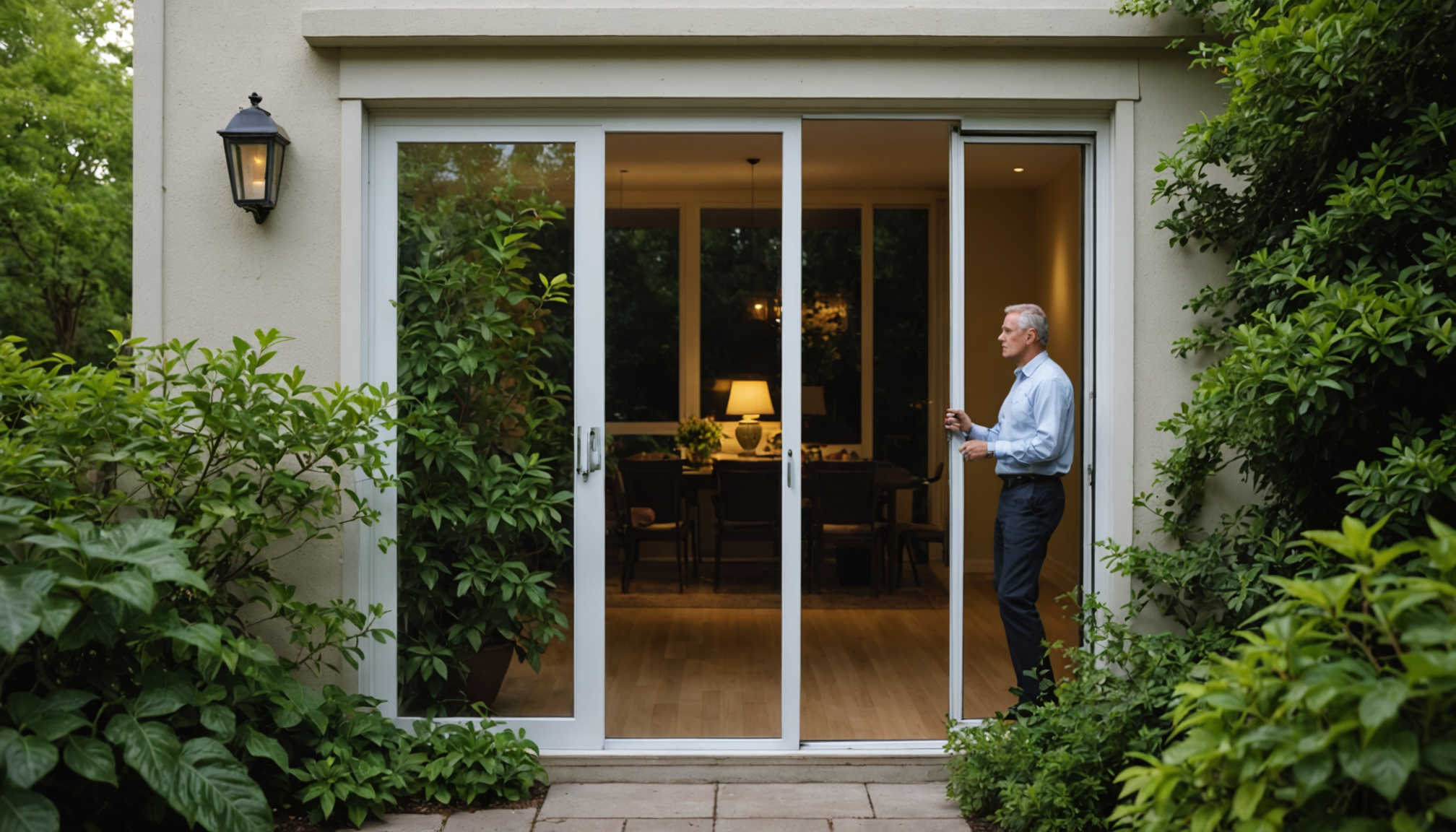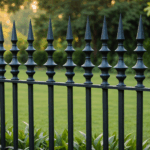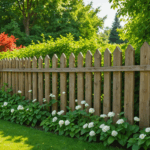Before implementing any measures to deter break-ins, it is crucial to have a thorough understanding of potential vulnerabilities within your property. Identifying these weak points allows homeowners to prioritize solutions that are both effective and cost-efficient. Start by conducting a comprehensive assessment of the exterior and interior of your home.
Begin with the exterior of your property. Walk around the perimeter of your home and observe from the perspective of a potential intruder. Are there dark, shadowy areas that could provide cover, or do shrubbery and trees obscure sightlines? Pay particular attention to doors and windows, as these are common points of entry for burglars. Acknowledging these areas helps in determining where to allocate resources effectively.
Consider the condition and placement of fences and gates, if applicable. A gate left open or a fence that can be easily scaled may invite unwanted visitors. Meanwhile, unsecured outdoor structures such as sheds and garages can also pose a risk. Evaluate whether locks are adequate or require upgrades to prevent easy access. Keeping these areas secure is a simple yet impactful step in fortifying your property against break-ins.
Inside the home, assess the hardware on doors and windows. Fragile locks, aged materials, or malfunctioning mechanisms should be flagged for replacement or repair. Sliding glass doors, for instance, can often be reinforced with simple, inexpensive solutions such as a dowel or security bar laid in the track. This can significantly impede unauthorized entry without major financial investment.
Creating a checklist can be beneficial in organizing the assessment process. Take note of specific areas that require more attention, and categorize them in terms of urgency and budget. Below is an example of how you might prioritize these vulnerabilities:
| Vulnerability Type | Priority Level | Possible Solutions |
| Unlit areas around the property | High | Add motion sensor lights |
| Weak door locks | High | Install deadbolts or smart locks |
| Obstructed sightlines | Medium | Prune trees and shrubs |
| Unsecured sheds/garages | Medium | Add padlocks or reinforce doors |
| Easily scalable fences | Low | Add extensions/anti-climb spikes |
Conducting this thorough vulnerability assessment lays the foundation for an informed, strategic approach to home security. By understanding and addressing these weaknesses, homeowners can significantly reduce the likelihood of break-ins without incurring substantial expenses. This proactive step is essential in safeguarding personal property and maintaining peace of mind.
enhancing outdoor lighting
 Efficient outdoor lighting is a powerful deterrent against break-ins, as it reduces the concealment opportunities for potential intruders. Enhancing your property’s outdoor lighting doesn’t have to be costly. Here’s a step-by-step guide to illuminating your home effectively:
Efficient outdoor lighting is a powerful deterrent against break-ins, as it reduces the concealment opportunities for potential intruders. Enhancing your property’s outdoor lighting doesn’t have to be costly. Here’s a step-by-step guide to illuminating your home effectively:
- Identify Key Areas: Begin by pinpointing the areas that most need illumination. Common target zones include entryways, pathways, driveways, and any potential hiding spots such as side yards or behind large structures. It’s also wise to consider other vulnerable areas identified during the vulnerability assessment.
- Choose the Right Lighting: Selecting appropriate lighting types is crucial. Options include:
- Motion Sensor Lights: These lights activate when movement is detected, providing a sudden and startling deterrent to intruders while conserving energy by not being continuously lit.
- Solar-powered Lights: Ideal for those looking to avoid increased electricity bills, solar lights store energy during the day and illuminate your property at night.
- LED Floodlights: Offering powerful, broad coverage, LED floodlights are energy-efficient solutions for larger areas that require constant lighting.
- Placement and Installation: Once you’ve selected your lighting types, strategically install them to maximize security:
- Entry Points: Place lights above all doors and any ground-level windows to illuminate access points directly.
- Pathways and Driveways: Use path lights or spotlights to ensure these routes are visibly clear and free from concealment shadows. Evenly spacing lighting down a driveway can be very effective.
- Hidden Areas: Identify potential hiding spots like thick shrubbery or shadowy backyard corners. These should have dedicated lighting to eliminate cover for intruders.
- Consider Timers and Smart Controls: To create the impression of an active, occupied home, use timers or smart lighting systems that can be programmed or remotely controlled. These features can randomize lighting patterns, making it difficult for anyone monitoring the property to predict routines.
- Regular Maintenance: Ensure all lighting fixtures remain in good working order. Periodically check and, if necessary, clean light covers to prevent dust and debris from diminishing brightness. Replace bulbs promptly when needed to maintain consistent coverage.
Incorporating these budget-friendly lighting strategies enhances both security and aesthetic appeal while playing a key role in preventing break-ins. Consistent, well-placed lighting not only deters but also provides peace of mind by creating a safer, more welcoming environment.
utilizing smart technology
 In today’s digital age, smart technology offers innovative and cost-effective solutions to enhance home security. By integrating smart devices into your security strategy, you can significantly increase protection while keeping expenses manageable. One of the primary benefits of utilizing smart technology is its ability to provide real-time updates and control over your security measures, even when you’re away from home.
In today’s digital age, smart technology offers innovative and cost-effective solutions to enhance home security. By integrating smart devices into your security strategy, you can significantly increase protection while keeping expenses manageable. One of the primary benefits of utilizing smart technology is its ability to provide real-time updates and control over your security measures, even when you’re away from home.
Smart Cameras and Doorbells: Installing smart cameras and video doorbells allows you to monitor your property remotely through a smartphone app. These devices provide live video feeds, allowing you to see who is at your door or what is happening around your home at any time. Many smart cameras also offer features such as two-way audio, enabling you to communicate with visitors or potential intruders. The clear advantage here is the ability to engage with someone at your doorstep without opening the door, adding an extra layer of security.
Smart Locks: Another effective tool in the smart technology arsenal is the smart lock. These locks can be controlled via a smartphone app, allowing you to lock or unlock doors remotely. You can also grant temporary access to guests or service providers without the need to distribute physical keys. This is particularly beneficial for maintaining security while simultaneously offering convenience. Additionally, it eliminates the worry of lost keys, as you can revoke and re-establish digital access permissions quickly and easily.
Security Systems with Mobile Alerts: Many smart security systems come equipped with sensors for windows and doors that send alerts to your phone if they detect unauthorized entry. This real-time notification system not only helps you promptly respond to potential threats but also serves as a powerful deterrent for burglars, who know that the chances of being caught increase significantly with immediate automatic alerts.
Integrating with Home Automation: Smart security devices often integrate well with other smart home systems, allowing you to automate routines. For instance, you can program your lights to turn on when motion is detected or make your home appear occupied by varying light patterns when you’re not there. Such automation contributes to creating an impression of activity at home, further deterring potential intruders.
Cost Efficiency: Utilizing smart technology doesn’t mean breaking the bank. Many solutions come in a wide price range, from high-end systems to affordable standalone devices that work just as effectively for those on a budget. The ability to scale and add more components as needed allows you to enhance your security system gradually without a hefty initial investment.
Implementing these smart technologies not only strengthens your home security but also provides convenience and control at your fingertips. By leveraging such innovations, you gain peace of mind, knowing that your home is protected efficiently and economically.
reinforcing entry points
 Securing the entry points of your home is essential in creating a formidable barrier against potential intruders. The majority of break-ins occur through doors and windows, making it imperative to reinforce these vulnerable spots. However, enhancing these areas doesn’t have to be an expensive endeavor. With some strategic upgrades and adjustments, you can significantly bolster your home’s defenses.
Securing the entry points of your home is essential in creating a formidable barrier against potential intruders. The majority of break-ins occur through doors and windows, making it imperative to reinforce these vulnerable spots. However, enhancing these areas doesn’t have to be an expensive endeavor. With some strategic upgrades and adjustments, you can significantly bolster your home’s defenses.
Start with the doors as these are often the first target for intruders. Traditional door locks may not be enough, so consider upgrading to deadbolt locks, which provide additional reinforcement. For an affordable yet effective boost in security, install either single-cylinder deadbolts, which can be locked only from the inside, or double-cylinder deadbolts, offering a locking mechanism on both sides. Reinforcing the strike plate, a metal plate attached to the door jamb where the lock’s latch is inserted, can also deter forced entry. Opt for long screws to secure the plate, anchoring it more deeply into the wall stud and increasing its resistance to impact.
Another crucial aspect of door security is the quality and fit of the doors themselves. Solid-core or metal doors provide far greater resistance to tampering than hollow-core doors. If replacing doors is beyond your budget, adding a door security bar or jammer to existing doors can provide an instant and cost-effective improvement by preventing doors from being forced open. Additionally, installing peepholes or wide-angle viewers empowers occupants to see who is at the door without opening it.
Windows, typically the most accessible points of entry, require similar attention. While double-glazed or laminated glass windows can offer greater resistance to break-ins, they can also be costly. Instead, consider applying window security film, which is a cheaper alternative that makes glass shatter-resistant. Security bars or grilles are also an excellent deterrent for ground-level and basement windows that are easily accessible. Meanwhile, investing in window locks or secondary locks, like pin locks for sliding windows, can provide an extra layer of security.
For those dealing with sliding doors, a frequent target for burglars due to their often inadequate locking mechanisms, simply placing a dowel rod or a window security bar in the track can effectively prevent them from being easily forced open. This straightforward defense measure is highly budget-friendly and simple to implement.
Reinforcing your home’s entry points enhances overall security while maintaining practicality and affordability. By focusing on the integrity of doors and windows and implementing additional security measures, you reduce the risk of unauthorized entry significantly. Remember, the goal is to make your home a less appealing target to potential intruders, and strengthening entry points is a critical step in achieving this.
fostering community vigilance
 Engaging with your community can be a powerful strategy in preventing break-ins, as it helps to create a collective sense of vigilance and support. Building strong relationships with your neighbors and participating in local initiatives can enhance security significantly without incurring any costs.
Engaging with your community can be a powerful strategy in preventing break-ins, as it helps to create a collective sense of vigilance and support. Building strong relationships with your neighbors and participating in local initiatives can enhance security significantly without incurring any costs.
Start by getting to know your neighbors. Having a friendly rapport means that you’re more likely to look out for each other’s properties. You can start a conversation about neighborhood safety during casual interactions or organize informal meet-ups. When neighbors are familiar with each other’s schedules and routines, they’re more likely to notice unusual activity and can act quickly or notify authorities if necessary.
Consider forming or joining a Neighborhood Watch program if one isn’t already in place. Such programs are effective deterrents to crime, as they increase the visibility of surveillance activities and involve collaboration with local law enforcement. Regular meetings can be held to share information about recent suspicious activities or to host workshops on safety tips. Moreover, the signage from an active Neighborhood Watch program itself acts as a deterrent for potential criminals, signaling that the area is actively monitored.
You can also leverage social media and messaging apps to create a virtual neighborhood watch. Platforms like WhatsApp, Nextdoor, or Facebook have groups or forums where community members can share updates about local security concerns, report suspicious behavior, or coordinate watches. These tools enable real-time communication, which can be crucial in preventing potential break-ins by quickly alerting neighbors and sharing safety tips.
Participating in community activities, such as local clean-up drives or neighborhood parties, can also foster a stronger sense of unity and connectivity. An engaged community is often a safer community, as social activities enhance mutual trust and encourage active participation in looking out for each other’s well-being.
Finally, encourage your community to maintain the appearance and upkeep of shared spaces and private properties, as well-maintained areas often deter crime. Overgrown properties or neglected appearances suggest vulnerability and can attract unwanted attention. By joining forces with your neighbors to keep your community clean and well-lit, you enhance the overall safety of the area.
Taking these steps to foster community vigilance not only enhances security but also cultivates a supportive and friendly neighborhood atmosphere. Through cooperation and proactive involvement, the entire community benefits from increased safety without the need for substantial financial investments.

